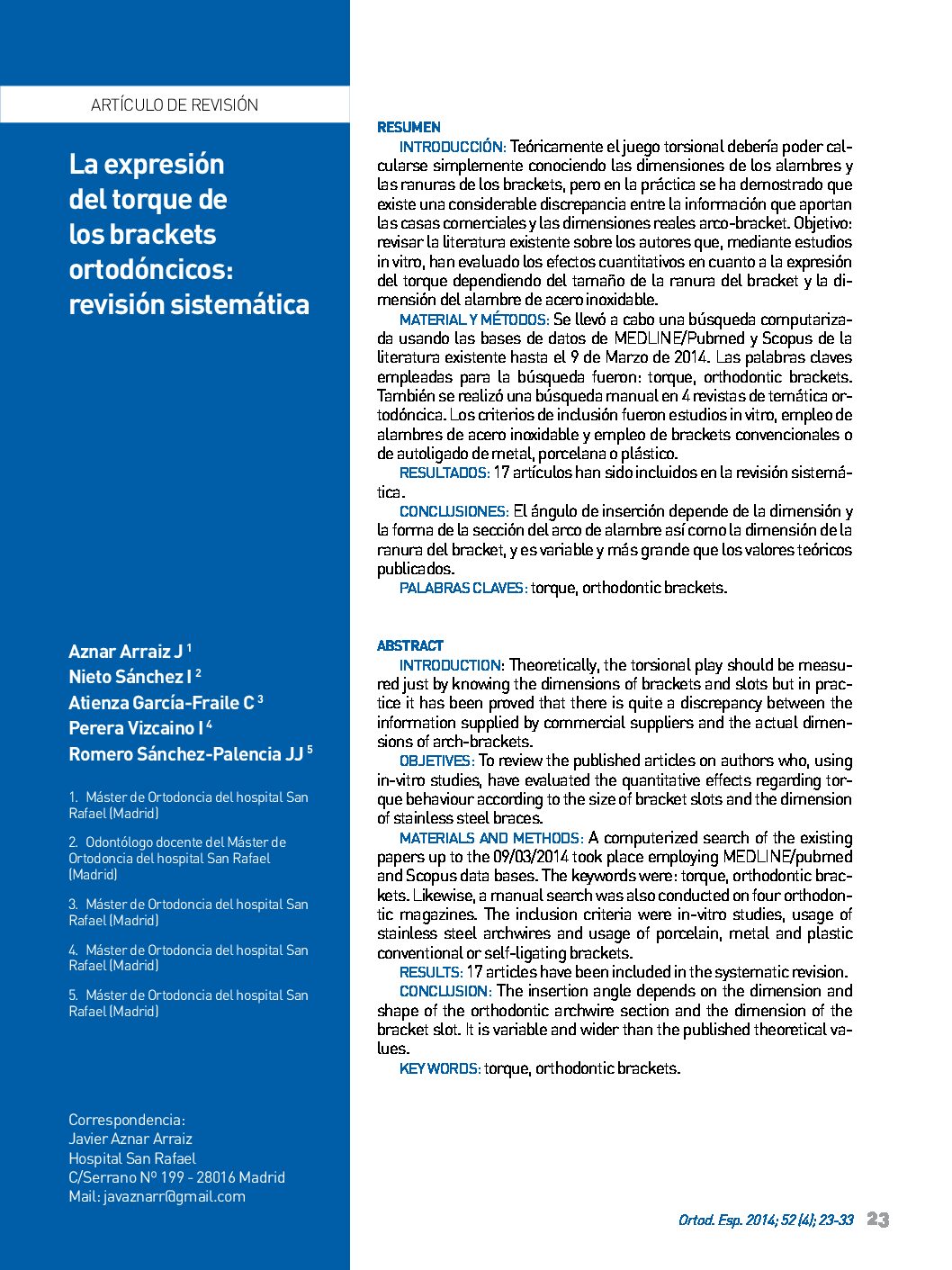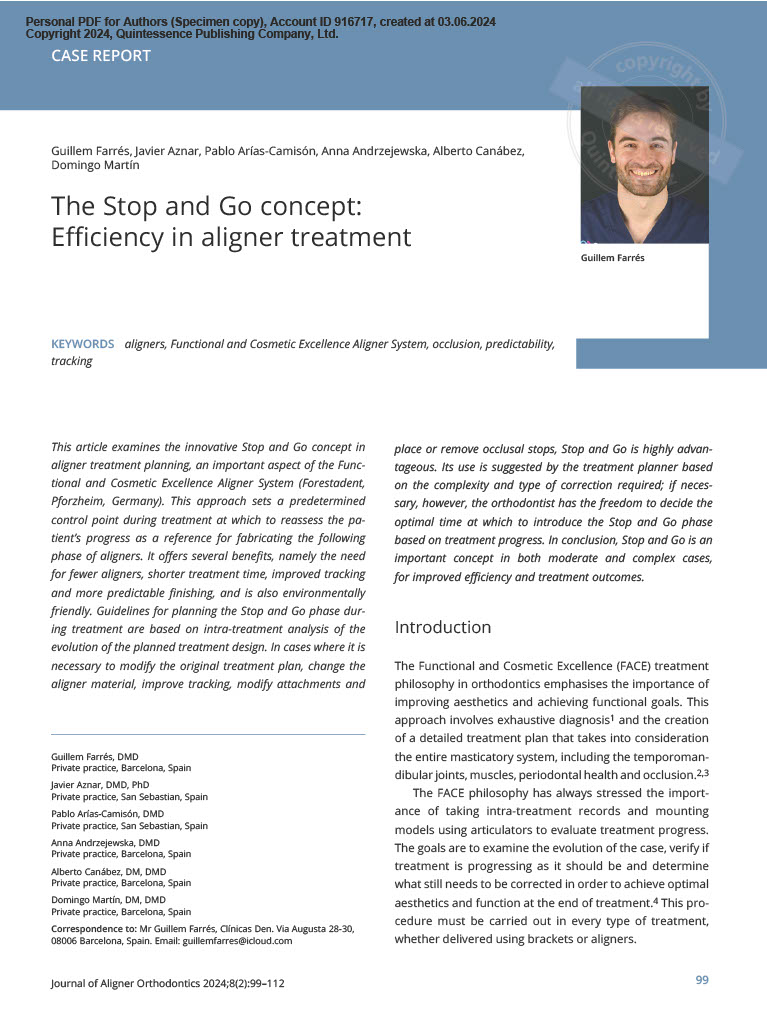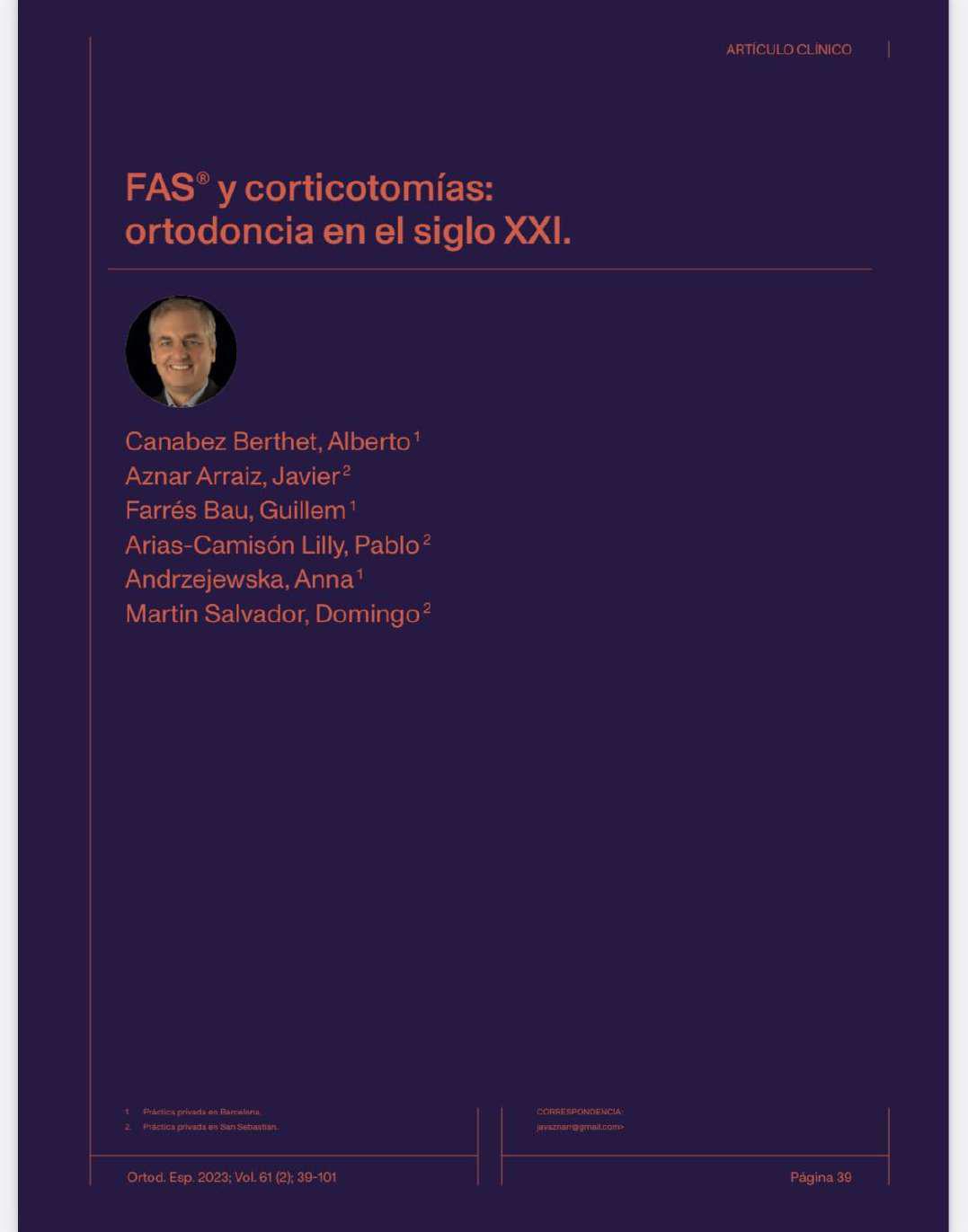Paper language: English
Paper language: Spanish
Paper language: English and spanish

La expresión del torque de los brackets ortodóncicos: revisión sistemática
AUTHOR: Aznar Arraiz
English abstract
INTRODUCTION: Theoretically, the torsional play should be measured just by knowing the dimensions of brackets and slots but in practice it has been proved that there is quite a discrepancy between the information supplied by commercial suppliers and the actual dimensions of arch-brackets. OBJETIVES: To review the published articles on authors who, using in-vitro studies, have evaluated the quantitative effects regarding torque behaviour according to the size of bracket slots and the dimension of stainless steel braces. MATERIALS AND METHODS: A computerized search of the existing papers up to the 09/03/2014 took place employing MEDLINE/pubmed and Scopus data bases. The keywords were: torque, orthodontic brackets. Likewise, a manual search was also conducted on four orthodontic magazines. The inclusion criteria were in-vitro studies, usage of stainless steel archwires and usage of porcelain, metal and plastic conventional or self-ligating brackets. RESULTS: 17 articles have been included in the systematic revision. CONCLUSION: The insertion angle depends on the dimension and shape of the orthodontic archwire section and the dimension of the bracket slot. It is variable and wider than the published theoretical values. KEY WORDS: torque, orthodontic brackets.Spanish abstract
INTRODUCCIÓN: Teóricamente el juego torsional debería poder calcularse simplemente conociendo las dimensiones de los alambres y las ranuras de los brackets, pero en la práctica se ha demostrado que existe una considerable discrepancia entre la información que aportan las casas comerciales y las dimensiones reales arco-bracket. Objetivo: revisar la literatura existente sobre los autores que, mediante estudios in vitro, han evaluado los efectos cuantitativos en cuanto a la expresión del torque dependiendo del tamaño de la ranura del bracket y la dimensión del alambre de acero inoxidable. MATERIAL Y MÉTODOS: Se llevó a cabo una búsqueda computarizada usando las bases de datos de MEDLINE/Pubmed y Scopus de la literatura existente hasta el 9 de Marzo de 2014. Las palabras claves empleadas para la búsqueda fueron: torque, orthodontic brackets. También se realizó una búsqueda manual en 4 revistas de temática ortodóncica. Los criterios de inclusión fueron estudios in vitro, empleo de alambres de acero inoxidable y empleo de brackets convencionales o de autoligado de metal, porcelana o plástico. RESULTADOS: 17 artículos han sido incluidos en la revisión sistemática. CONCLUSIONES: El ángulo de inserción depende de la dimensión y la forma de la sección del arco de alambre así como la dimensión de la ranura del bracket, y es variable y más grande que los valores teóricos publicados. PALABRAS CLAVES: torque, orthodontic bracketsDownload paper (PDF)
Access our most valuable content free of charge.
Related Scientific papers
1st FACE online symposium
The world is changing and in FACE, following tradition, we wont be left behind.
As we all know, we can’t travel or meet, so once again, we will take advantage of technology to turn the situation around.
«Work hard, play hard«
Two days full of experiences, thanks to the participation of 20 different clinics.
We’ll see you on February 26 and 27





